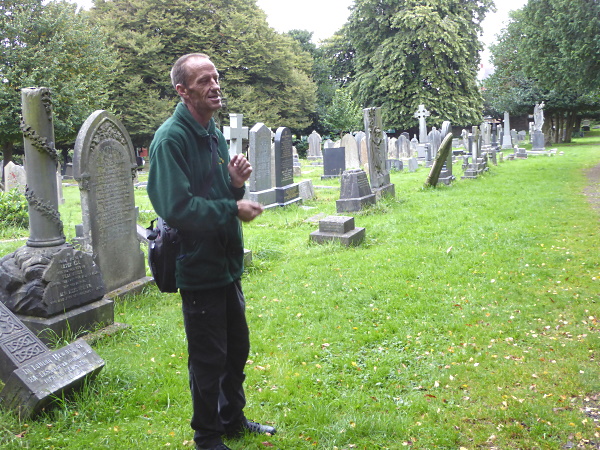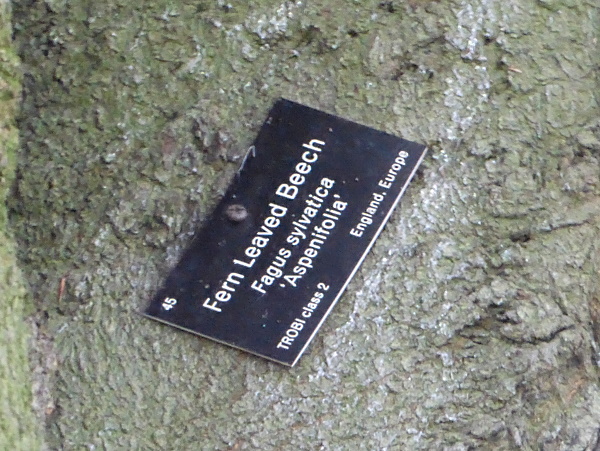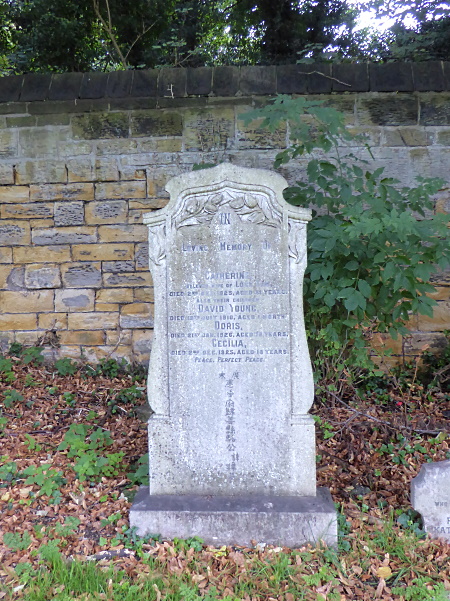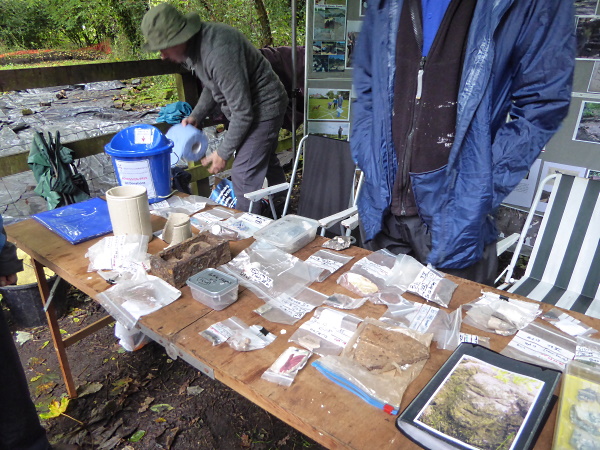
On a fine sunny morning we got off the bus at the southern corner of Bidston Hill Nature reserve and threaded through King George’s Way. It’s a footpath through the woodland, part of which climbs to Bidston Hill, but our section skirts the allotments and comes out by the car park of Tam O’Shanter’s urban farm. It’s a little bit of old woodland in a busy suburb.

Flaybrick Cemetery is just across Boundary Road. During the pandemic they have been doing lots more research on their historic graves, and signboards are popping up everywhere. We go there for the trees, of course. They have over 140 species, more than anywhere else on the Wirral after Ness Gardens. Many of them are original plantings from 1864, probably including their huge Chilean Pine (Monkey Puzzle), now fruiting magnificently.

As we were some of the earliest visitors on their Open Day we were accosted by the Bard of Flaybrick, Terry Briscoe, who recited some of his Wirral poems to us.

He also drew our attention to the grave of the first burial in the cemetery, of Francis Morton, a wealthy iron and steel manufacturer, whose company had provided all the ironwork on site, and who had laid the foundation stone. He died six months before the cemetery was consecrated and officially opened, so he was actually buried there twice, being the first and the second burial. His grave is now marked with an obelisk.

We looked at some of our favourite trees, and were relieved to find that the old Horse Chestnut by the Rowan avenue was still standing. It had been deemed diseased and dangerous a couple of years ago, but the park staff disagreed, and so they have compromised by lopping just the branches that overhang the path.

The labels on the trees themselves are evolving. Some have small QR codes pinned to them, saying “Scan me”, but since I didn’t have my smartphone with me, I have no idea what they lead to. A very few have proper tree labels, including one on the Fern-leaved Beech, fixed at a strange angle, but giving its scientific name, its origin, and the mysterious “TROBI Class 2”. TROBI is the Tree Register of Britain and Ireland, so I guess class 2 means it isn’t a champion, but just “remarkable”.

The third type of sign was more frustrating. Little blue plaques are popping up, probably issued by the Tree Register, saying the tree is a County Champion, but not giving the name of the tree or the reason for the designation. I suspect this is more likely to annoy visitors, rather that interest them, and it looks like a cheap and unsatisfactory project by the Tree Register.

In late morning it started to drizzle, then it came down more determinedly. What is it with Wirral lately? We hurried past some of our favourite trees, pausing only briefly at the rare Oregon or Big Leaf Maple Acer macrophyllum.


One other signboard caught our attention, marking a tragic grave. A man called Lock Ah Tam was attacked and beaten in 1918 by a gang of Russian sailors. He survived, but underwent a personality change and became a violent alcoholic. Eight years later he shot his wife and two daughters, was convicted of murder, and executed in Walton jail. Here is the grave of his murdered family.

We had another wet lunch, then a quick tour of the cemetery chapel (no shelter there – it’s roofless). As the rain eased we looked at the animals in Tam O’Shanter urban farm, goats, sheep, and a few little fat Kunekune pigs.

Just behind the farm buildings Bidston Community Archaeology are digging the site of an old cottage, trying to find when the area was first occupied. Bidston village has pre-mediaeval origins, and some farmsteads in the area date back to the early 1500s. Finds so far include prehistoric flint tools, 17th century pottery and evidence of metal forging.


Public transport details: Bus 437 from Sir Thomas Street at 10.04, arriving Upton Road / Boundary Road at 10.28. Returned from the opposite stop on the 437 at 2.45, arriving Liverpool 3.05
